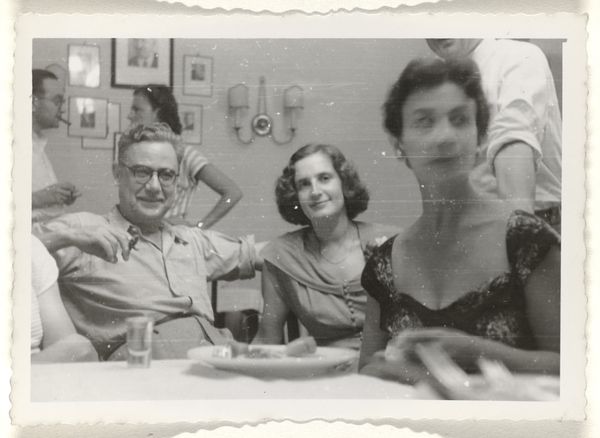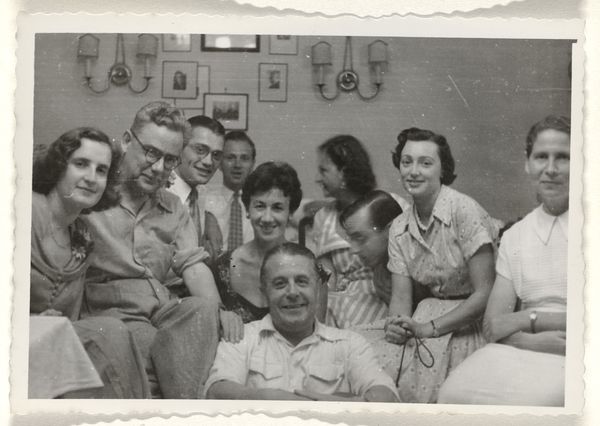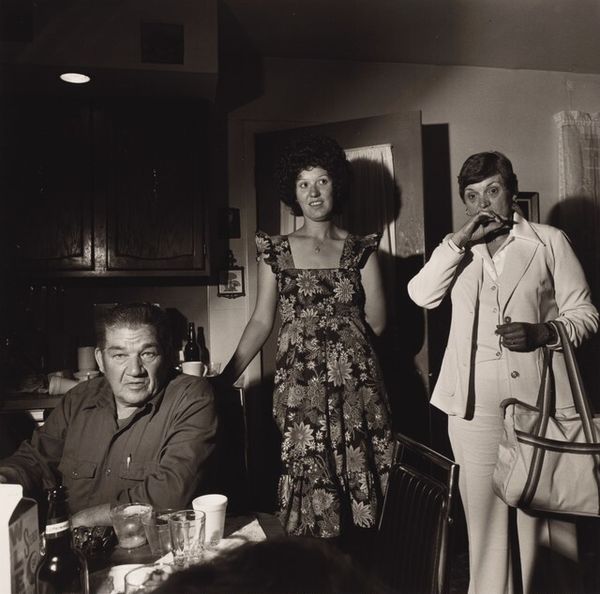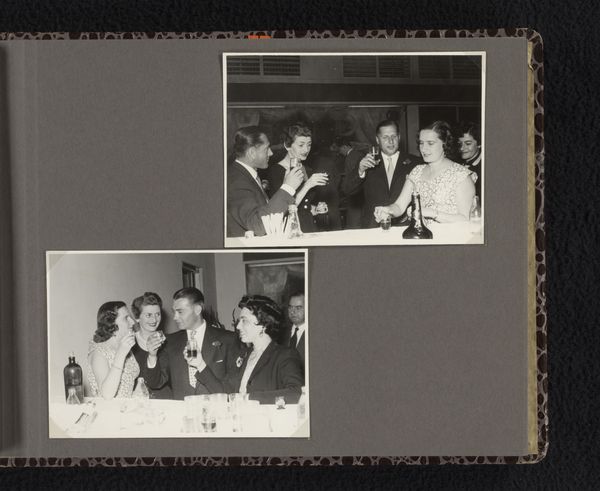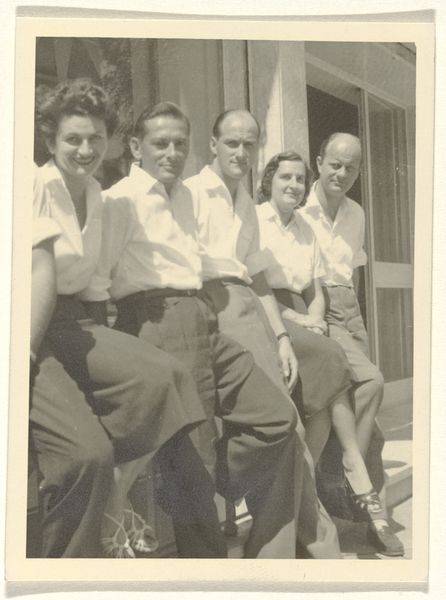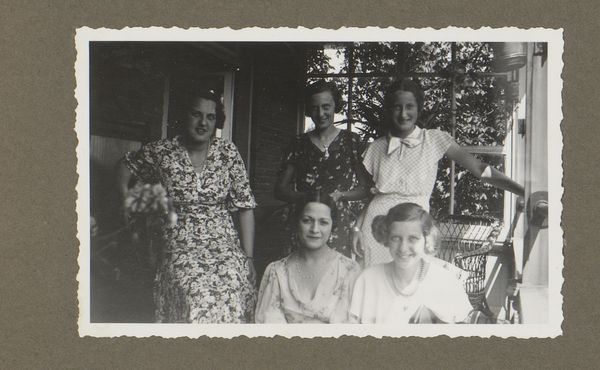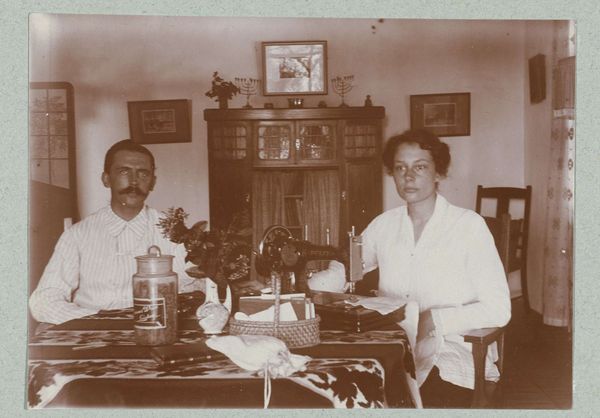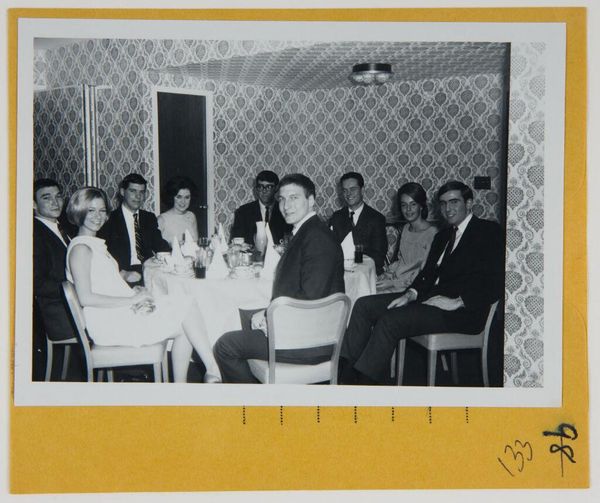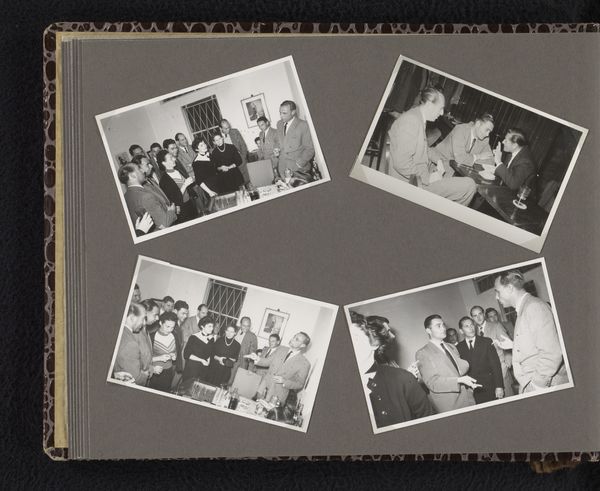
Isabel Wachenheimer met een onbekende man en een onbekende vrouw tijdens een banket voor de armen 1946 - 1963
0:00
0:00
photography, gelatin-silver-print
#
print photography
#
archive photography
#
photography
#
historical photography
#
gelatin-silver-print
#
genre-painting
Dimensions: height 70 mm, width 95 mm
Copyright: Rijks Museum: Open Domain
Editor: This gelatin-silver print, titled "Isabel Wachenheimer met een onbekende man en een onbekende vrouw tijdens een banket voor de armen," created between 1946 and 1963, depicts a seemingly casual gathering. I'm struck by the contrast between the supposed formality of a banquet and the somewhat ordinary depiction of these people. What do you see in this piece? Curator: The "banquet for the poor" title immediately prompts a deeper inquiry. It raises critical questions about representation, class, and the performativity inherent in charitable acts. The image, framed through a Western lens, appears as social documentation; but we need to critically ask about whose narrative is centered? And what are the implications of portraying poverty through photography, especially in the mid-20th century? What does the artist leave out? Editor: So, you're saying it’s important to question the photographer's intention and the social dynamics at play? Curator: Precisely. Consider the context of the photograph's creation—post-war Europe, potential social unrest. Images like these might reinforce or challenge prevailing power structures. Were these people genuinely uplifted, or was this a performance for the photographer and, by extension, the audience? Thinking about the representation of women, how does this visual archive potentially reinforce or disrupt patriarchy? Editor: I hadn’t considered the political implications so explicitly. It’s more than just a picture; it’s a document embedded in complex power relations. Curator: Exactly! Analyzing images requires navigating complex intersectional narratives, examining how identities are shaped and represented within a specific socio-political frame. Editor: I’ll definitely look at photography with a much more critical eye now. Thanks for shedding light on those nuances! Curator: My pleasure. Art is not a passive reflection but an active participant in shaping our understanding of the world.
Comments
No comments
Be the first to comment and join the conversation on the ultimate creative platform.
